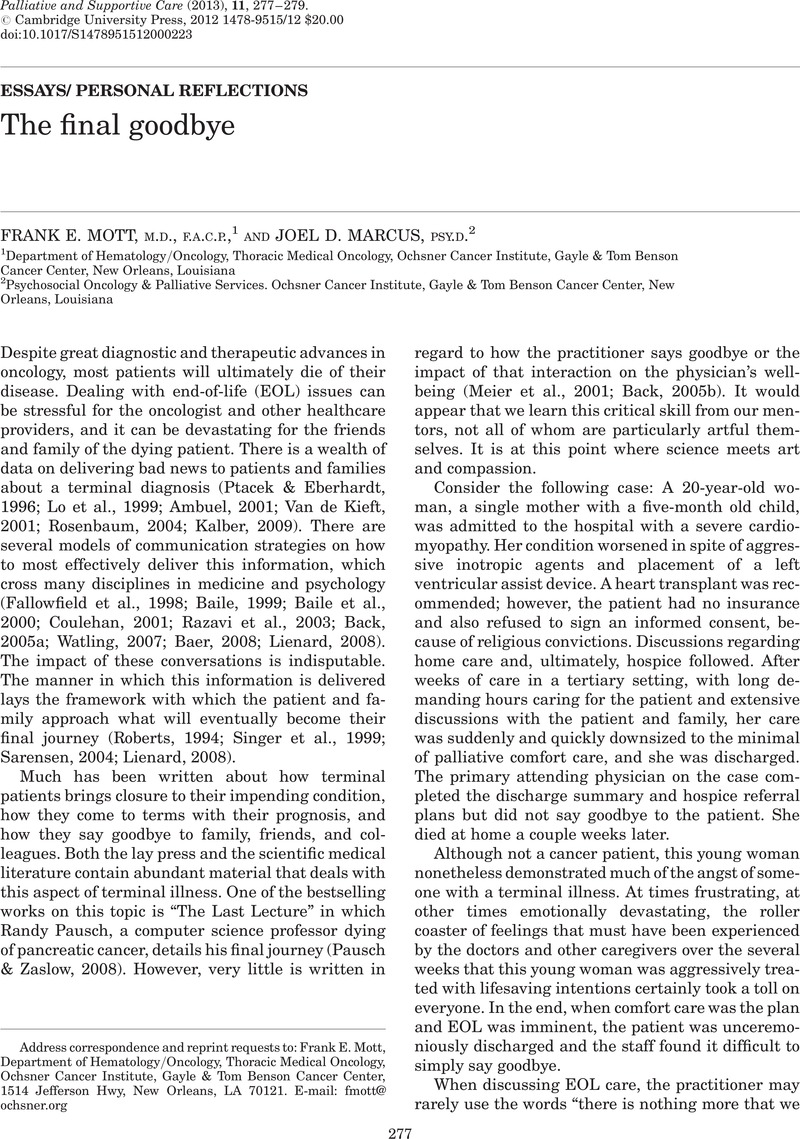Crossref Citations
This article has been cited by the following publications. This list is generated based on data provided by Crossref.
Mott, Frank E.
and
Adams, Kelly C.
2019.
Advance Care Planning and End-of-Life Issues in Head and Neck Cancer.
Journal of Palliative Care,
Vol. 34,
Issue. 1,
p.
18.





